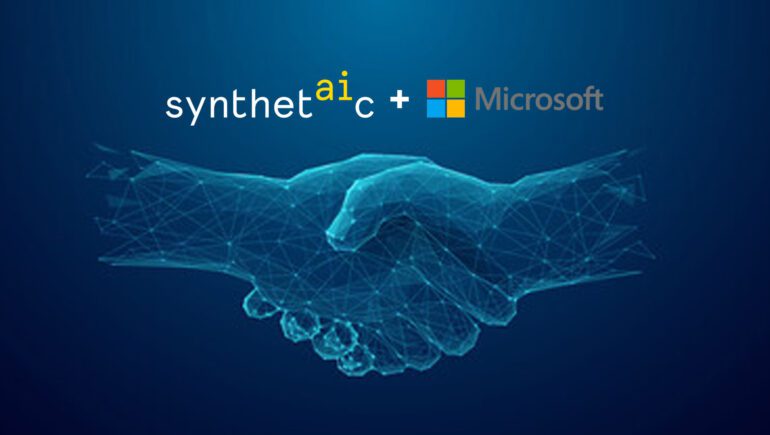TL;DR:
- Microsoft and Synthetaic forge a five-year partnership.
- Synthetaic leverages AI to analyze spatial and aerial sensor data.
- RAIC tool by Synthetaic operates on Microsoft Azure cloud.
- Microsoft grants access to extensive cloud compute resources.
- Collaboration focuses on geospatial, video imagery for security and sustainability.
- RAIC tool to benefit government agencies via Microsoft Azure Government Cloud.
Main AI News:
In a groundbreaking move unveiled on August 29, tech giant Microsoft has solidified a five-year collaboration with Synthetaic, a dynamic startup renowned for harnessing the potential of artificial intelligence to meticulously parse through data stemming from spatial and aerial sensors. Synthetaic, based in Wisconsin, had made waves earlier this year by ingeniously deploying AI in conjunction with Planet Labs’ repository of satellite images to independently trace the trajectory of a Chinese spy balloon as it traversed the expanse of the United States—an endeavor that concluded with the balloon’s interception.
At the core of Synthetaic’s offerings is their cutting-edge creation, the Rapid Automatic Image Categorization (RAIC) tool. This ingenious tool finds its foundation in the robust framework of Microsoft Azure’s cloud infrastructure. Building upon this foundation, the new accord between Microsoft and Synthetaic opens the gates for the latter to access a staggering reservoir of nearly 1 million hours’ worth of cloud-based computing resources—a development of paramount significance, the company highlights.
The synergy between Synthetaic and Microsoft’s Azure Space is poised to engender innovative solutions for processing a mosaic of data types, including geospatial insights, static images, and dynamic video content. These applications hold far-reaching implications, ranging from bolstering national security and expediting disaster response mechanisms to steering environmental and sustainability endeavors. Corey Jaskolski, the visionary founder and CEO of Synthetaic, is emphatic about the potential of this partnership to redefine the landscape of data analytics and its pragmatic applications. The prospects seem not only exciting but transformative.
Jason Zander, the Executive Vice President of Strategic Missions and Technologies at Microsoft, emphasizes the magnitude of AI’s latent power to unravel profound insights from the colossal troves of data amassed by governments and organizations globally. This strategic alliance, Zander iterates, serves as the conduit for amalgamating Microsoft’s forefront AI advancements with Synthetaic’s prowess in data analytics—an amalgamation that, collectively, deepens humanity’s comprehension of the intricate tapestry of our world.
Looking ahead, the RAIC data analysis marvel, a product of Synthetaic’s tireless ingenuity, is slated for deployment within government agencies, marking a significant milestone in bridging AI and public governance. Notably, this integration is not at the expense of security; the Microsoft Azure Government Cloud, renowned for its impregnable security infrastructure and adherence to stringent compliance standards, stands as the avenue through which agencies can harness AI’s potential without jeopardizing sensitive government data. This marks a commendable stride toward marrying innovation with prudence, ultimately fostering a landscape where technological leaps and security are harmonized.
Conclusion:
The collaboration between Microsoft and Synthetaic ushers in a new era of AI-driven insights, revolutionizing data analysis and resource allocation in various sectors. This strategic partnership not only enhances Synthetaic’s innovative potential but also cements Microsoft’s pivotal role in propelling the AI and cloud computing market to unprecedented heights. As businesses increasingly harness the power of AI to decipher complex data sets, this collaboration will likely serve as a blueprint for future synergies in the dynamic technology landscape.

